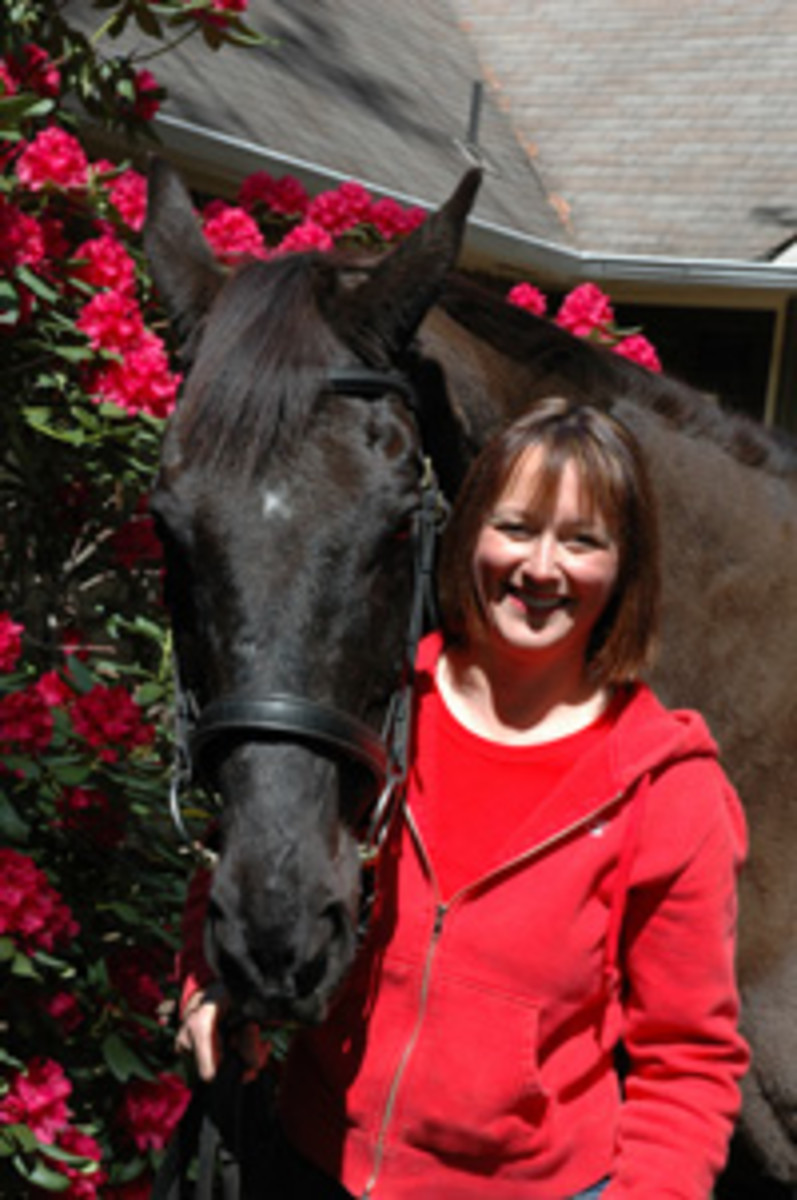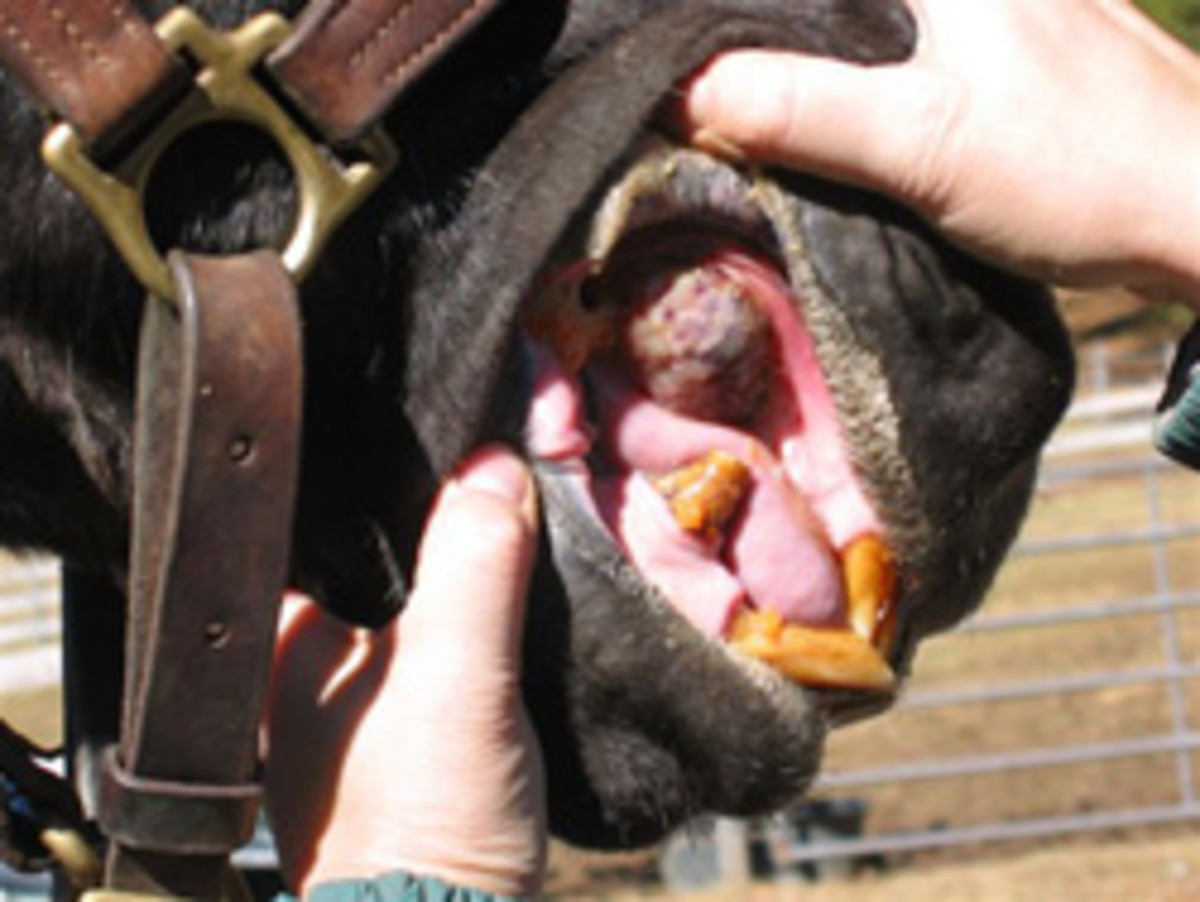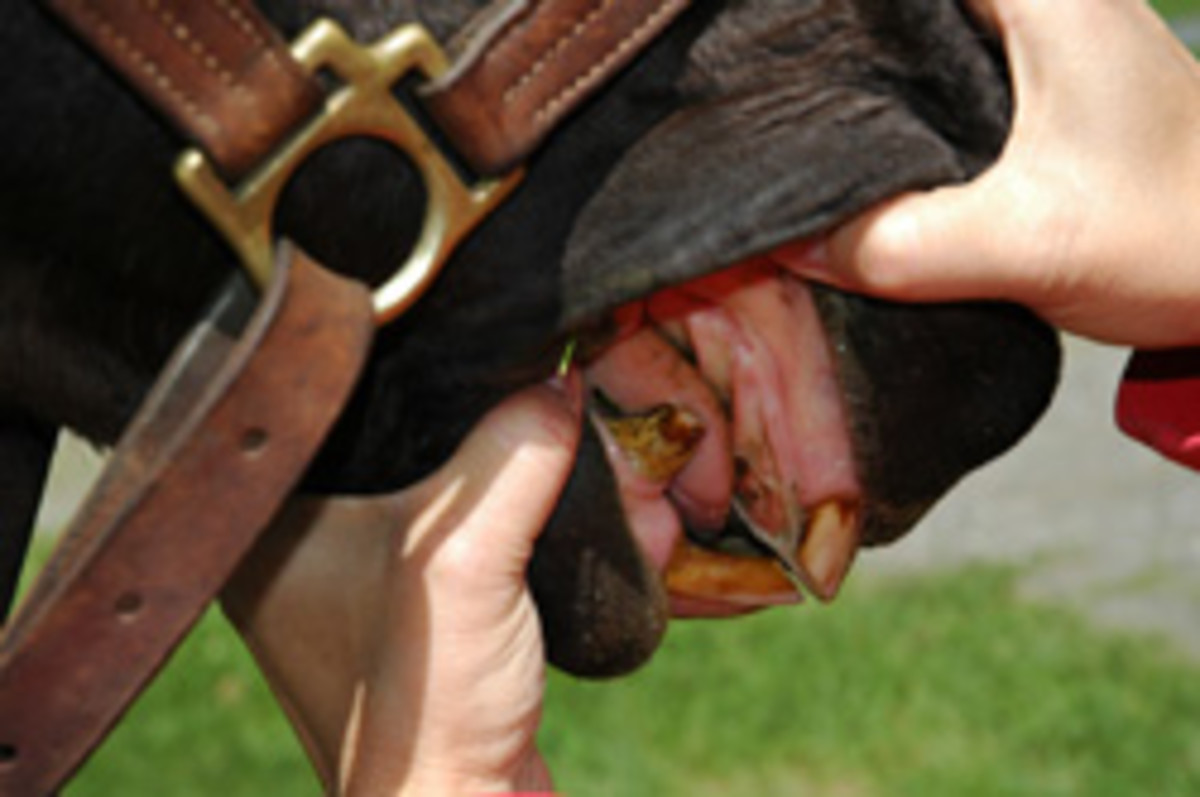
Horses have been in my life since I was a little girl. My parents couldn’t afford lessons, so I made do with Breyer horses growing up. They galloped in place and took me on many an adventure on the shelves my dad built for me in my room. It’s been 26 years now that I’ve been a recreational dressage rider and had a horse in my life thanks to my great husband (who gives me the opportunity to make one a part of our lives).
Throughout all these years, I’ve told many girls whom I’ve taught riding, “Being in love with horses is like a disease, it’s in your blood. It’s a part of you.” This is an analogy, but a disease is not really a good thing. Like a disease, you have to watch for signs that something might be wrong. How many times do you check your horse’s legs, give his body a once-over every time you get him from the pasture, take him out of the stall, or lead him to the barn? Do you ever think to check the inside of his mouth on a regular basis? If not, you want to add that to your checklist.
My partner for the last 10 years is a retired, Third level, Thoroughbred gelding that just turned 27. He was retired from the show ring at age 17 when I was introduced to him. He’s still doing Third level work and even started jumping three summers ago and loves it. But that’s not the real story.
Everyone that knows Rom knows he’s special. He spent his show career throughout the state of North Carolina. Rom’s nickname became the “Energizer bunny.” Yes, as the name implies, he keeps going and going and just gets better. But, this winter in the mountains of North Carolina, he faced the test of his life. Early in January, I stopped at the barn to check on him and he seemed fine. I went back two days later and there was an egg-shaped growth protruding from his right upper jaw. I called his vet, Dr. Amber Melton of Healing Springs Animal Hospital in Galax, Va., and after a quick exam, she found what appeared to be a large necrotic (black, dead tissue) mass surrounding the upper canine tooth. She immediately suggested a referral to the Virginia-Maryland Regional College of Veterinary Medicine in Blacksburg, Va., for mass removal and further diagnostics. Rom was trailered up that day and settled in.

The growth and canine tooth that the tumor surrounded were scheduled to be removed the next morning. During the night, Rom must have removed the tumor himself, by rubbing it off against the stall wall. That morning, the surgeon removed the diseased tooth, scoped and X-rayed his nasal passages. All results were normal. The histopathology report came back as an ossifying fibroma, which is a benign tumor that is unlikely to recur. I was thrilled and made several calls to all Rom’s “human friends” letting them know he was all right.
However, after getting him home, the growth came back three days later. I emailed Dr. Melton photos of his mouth and she suggested bringing him to Healing Springs Animal Hospital. After arriving, Dr. Melton debrided (scraped tissue) the area and sent off another sample for testing since the mass was not supposed to recur. She removed multiple tooth fragments and a large area of abnormal tissue from the previous procedure and performed cryotherapy with liquid nitrogen.
Rom stayed at the hospital following the surgery. He had a port stitched to his neck for his antibiotics (Potassium Penicillin and Gentamicin) and anti-inflammatory (Banamine) drugs. He also had twice daily mouth flushes. Throughout the ordeal, he was a good patient. He was able to chew his pellets on his left side, but hay was tough for a few days. Dr. Melton and I were sure he had one heck of a headache!
While we waited for the second histopathology report to come back, unhealthy, black tissue began forming again. This histopathology report came back as osteosarcoma, a rare equine form of bone cancer, which explained why the mass continued to recur. This cancer is so rare that Dr. Melton had never experienced it. There’s not much out there, even when you Google it.
Dr. Melton discussed with me further treatment options for Rom including referral for radiation therapy or trying to further debride the area under general anesthesia. She and Dr. Jamie Cassell (also of Healing Springs Animal Hospital) worked together to perform Rom’s second surgery. After anesthetizing him, they successfully removed a large area of tumor and soft tissue surrounding the part of the maxilla (upper jaw) while also removing the tooth root. This time my calls to Rom’s “human friends” were to ask for prayers.
Rom spent a total of 10 days at Healing Springs Animal Hospital. Not only was I worried about Rom, but I was also stressing over when I could get him home. This past winter has been the worst in the North Carolina mountains since the early 60s. We had over 70 inches of snow and ice. I was able to go up and visit Rom one day when the roads were clear. We had one window of opportunity to get him home between snowstorms on Feb. 8 and had to take it. We were unable to trailer to the barn due to snow and ice and were forced to unload Rom on a main road. I had to walk him a quarter mile to the barn in snow that was over eight inches deep. His ears perked up when he saw his stall mate, Doc; he was glad to be home and so was I.
Dr. Melton came to our barn for spring shots in early April and was amazed at Rom’s recovery. At the time of her visit, it had been eight weeks since the last procedure and as Dr. Melton said, “It’s as if he never had a tooth there, there’s not even a scar.” I now check Rom’s mouth a couple times a week and will do so the rest of his life.

It is spring now, and I’m working him. The first time I rode him since the surgeries, I had tears in my eyes. I wasn’t sure I’d have this opportunity again. We don’t know if or when the cancer will come back. Osteosarcomas appear to be locally invasive in horses, but can recur at the original site. This means that they do not tend to metastasize or spread to other areas of the body, but do tend to grow back even after surgical excision. But, right now we both have a smile on our faces, as life is good each and every day he’s here. Rom has given so much to so many people throughout his dressage career, and he just keeps giving now. He has given me another gift, more days with him, and that is a blessing I will cherish as long as I have him.











